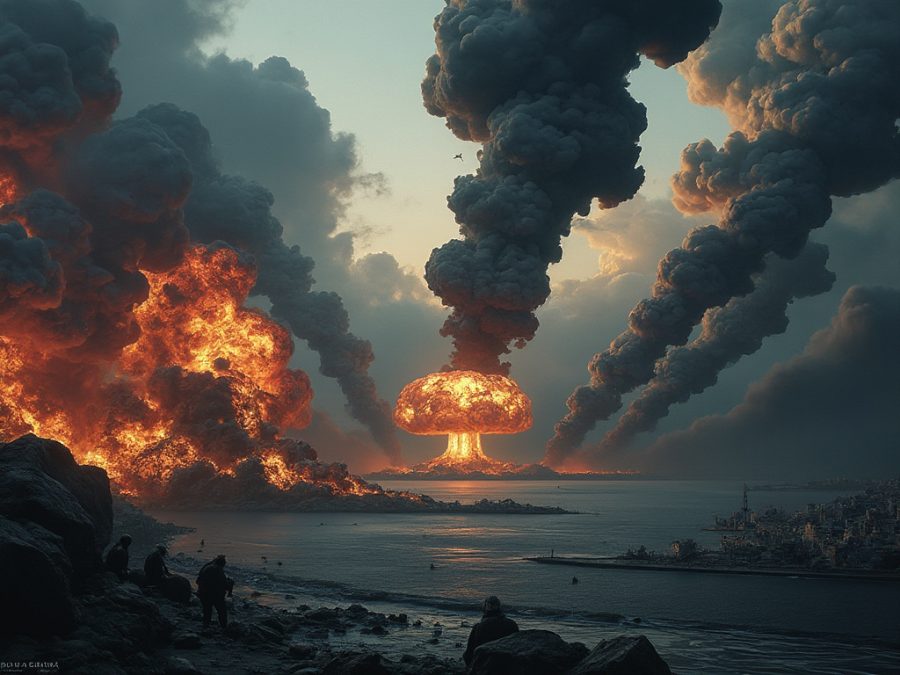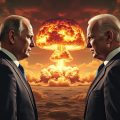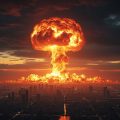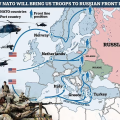
In the ongoing geopolitical chess game surrounding the Ukraine conflict, NATO has entered a new phase of strategic deliberations, focusing on the possibility of preemptive military actions and the role of nuclear capabilities. Recent talks within NATO, as well as bilateral discussions between Britain and France, have unveiled a complex web of military considerations aimed at countering Russian advances.
NATO’s Contemplation of Preemptive Strikes
The Military Committee Chairman of NATO, Admiral Rob Bauer, has publicly discussed the idea of preemptive strikes against Russian targets should there be signs of an imminent threat. This rhetoric marks a significant shift in NATO’s strategic posture, traditionally focused on defensive measures. The discussions reflect a growing concern over Russian military maneuvers and the potential for escalation if unchecked.
- Strategic Deterrence: The notion of preemptive strikes is based on the principle of deterrence, aiming to dissuade Russia from further aggression by showcasing NATO’s readiness to act decisively. This strategy would involve targeting Russian military assets that could pose immediate threats to NATO or Ukrainian forces.
- Legal and Ethical Considerations: While preemptive strikes could be seen as proactive defense, they carry significant legal and ethical implications, including potential violations of international law which generally prohibits such actions unless in clear self-defense scenarios. This has led to heated debates among NATO allies on the balance between security and international legal norms.
Potential Transfer of Nuclear Capabilities
Parallel to discussions on conventional military responses, there have been talks about the potential transfer of nuclear capabilities to Ukraine. Although no concrete actions have been taken, the conversation has stirred considerable debate:
- Nuclear Sharing: This involves the potential for deploying NATO nuclear weapons on Ukrainian soil or even transferring control to Ukrainian forces under specific conditions. Such steps would significantly alter the strategic landscape, potentially escalating the conflict to a nuclear dimension.
- France and Britain’s Stance: Both nations, which maintain independent nuclear deterrents, have been part of these dialogues. The discussions include scenarios where nuclear capabilities might be used or shared as a deterrent against Russian aggression. However, both countries have historically been cautious about the proliferation of nuclear arms, which complicates these considerations.
- Security Assurances: The talk of nuclear capabilities also touches on broader security guarantees for Ukraine, reminiscent of the Budapest Memorandum from 1994, where Ukraine relinquished its nuclear arsenal in exchange for security assurances, assurances which many argue Russia has violated through its actions in Crimea and eastern Ukraine.
Current NATO Strategy
- Enhanced Support for Ukraine: NATO has been unequivocal in supporting Ukraine with military aid, intelligence, and training. However, the introduction of nuclear options into the discourse signifies a profound shift from conventional to potentially strategic nuclear deterrence.
- Balancing Act: NATO must navigate the delicate balance of supporting Ukraine while avoiding direct military engagement with Russia, which could lead to a broader conflict, possibly with nuclear implications.
- Diplomatic Channels: Despite the military considerations, NATO continues to emphasize diplomacy, urging for a peaceful resolution but maintaining robust military readiness as a deterrent.
International Reactions
- Russia: The Kremlin has responded with warnings, interpreting these discussions as provocations that could justify their own military escalations. Russian rhetoric often includes threats of nuclear retaliation, framing NATO’s actions as existential threats to Russian security.
- Global Community: The international community watches with concern, with many nations advocating for more diplomatic efforts to de-escalate the situation. There’s a significant fear that any miscalculation could lead to a nuclear confrontation, the consequences of which would be catastrophic.
Conclusion
As NATO deliberates on these severe measures, the situation remains fluid, with each development potentially altering the course of the conflict. The discussions around preemptive strikes and nuclear options underscore the gravity of the situation, highlighting the need for careful strategy, international cooperation, and a commitment to peace. The world watches closely, hoping for a resolution that does not lead to further escalation but instead fosters a stable and secure Europe.








